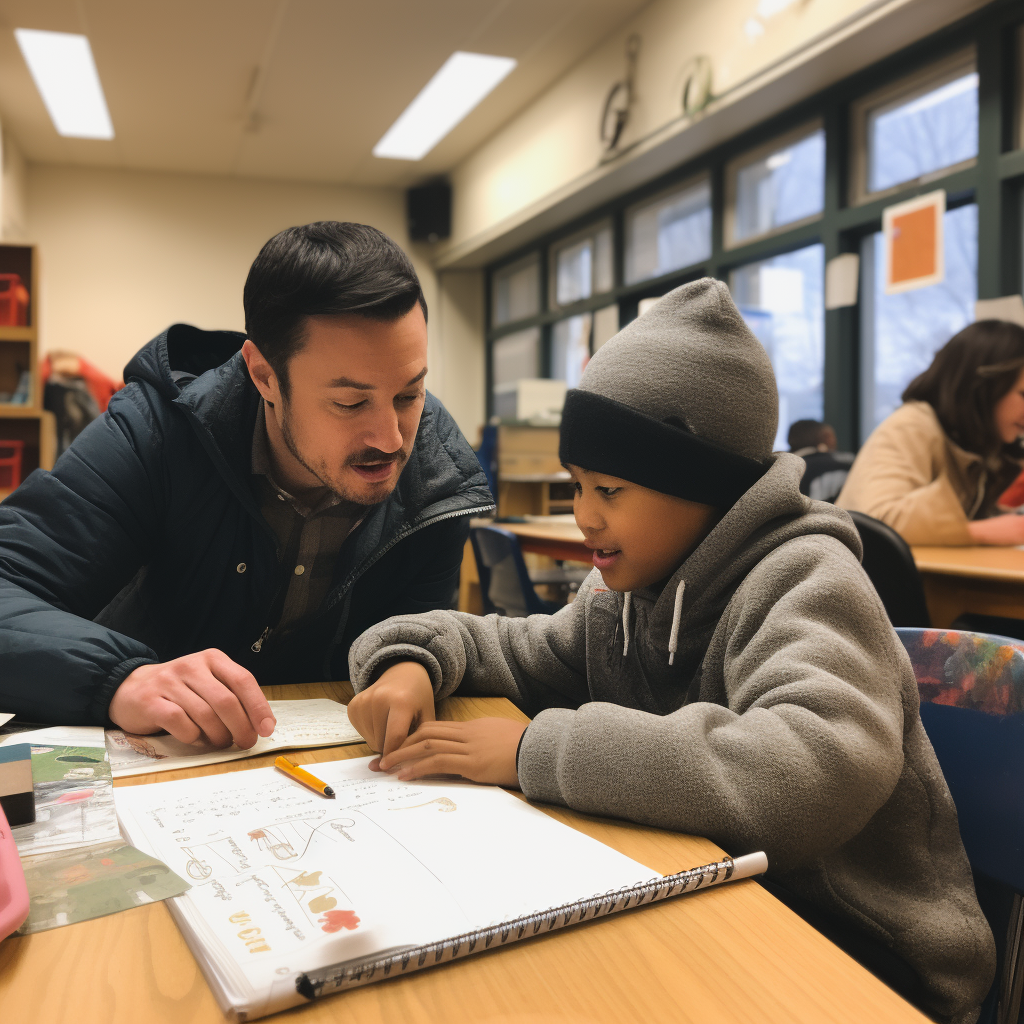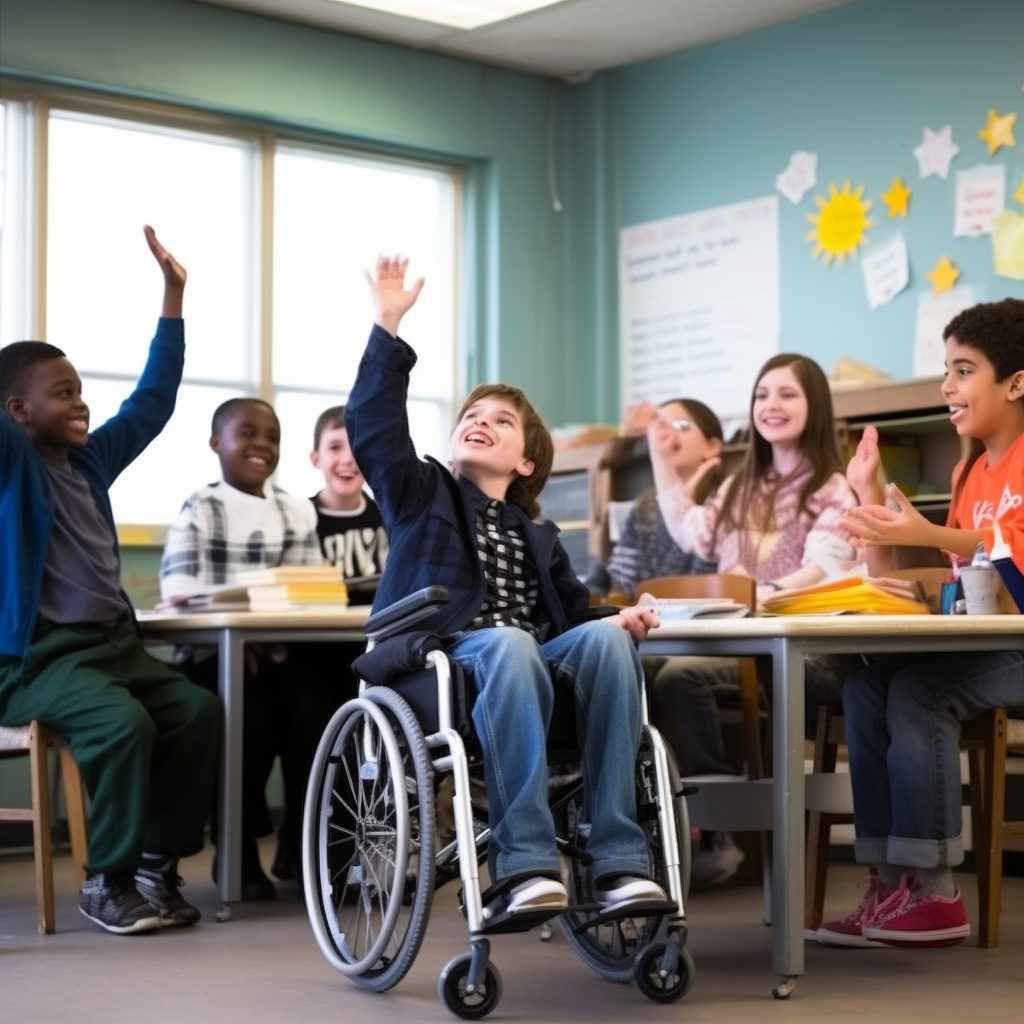A General Overview of the IEP

The idea of an Individualized Education Program (IEP) can sometimes appear intimidating or overwhelming at first glance. Parents and even students might feel a mix of emotions, ranging from uncertainty to apprehension, when navigating this process. The thought of discussing a child’s challenges, determining specialized needs, and understanding the legal jargon within an educational context can be daunting. However, what initially seems daunting about the IEP process often proves to be an opportunity for support and growth. It’s a structured framework designed to ensure every child’s unique learning needs are met. Rather than a source of fear, it becomes a roadmap for tailored education.
The IEP process involves a team effort, drawing from the expertise of educators, specialists, and the invaluable insights of parents or guardians. This collaboration aims not only to address challenges but also to uncover a child’s strengths and potential. It’s a chance to celebrate individuality and craft a learning experience that fosters growth and success.
Once engaged in the process, families often find it empowering. They gain a clearer understanding of their child’s educational journey, develop strong partnerships with educators, and acquire resources and strategies to support their child’s learning needs effectively. Moreover, an IEP isn’t static; it’s a living document. It adapts and evolves as the student progresses. Regular meetings and assessments ensure the plan remains aligned with the child’s development, providing an avenue for continuous improvement.
Ultimately, what might seem initially intimidating about the IEP process turns out to be an invaluable support system. It provides a structured, personalized approach to education that empowers both the child and their support network, fostering an environment where every child can thrive.
What are the Elements of an IEP?
The IEP outlines the student’s strengths, challenges, goals, and the specific services, accommodations, or modifications needed to support the student’s learning. It’s a legally binding document that guides the student’s education, detailing the curriculum modifications, assistive technology, specialized instruction, therapies, or additional support needed for the student.
Strengths
The first element of the IEP is the student’s strengths. This is often the first thing reported, as it sets the tone for the IEP team, which is a great way to ensure the meetings never start on a negative note and will showcase the student’s best attributes. For instance, the student may enjoy partaking in math, be a creative individual, love writing, be a critical thinker, or be great at problem solving. The strengths are endless, and each student is an individual. For this reason, the IEP team will spend time reporting this to parents, teachers, specialists, and service providers.
Sharing the student’s strengths is a key part of getting a full picture of the student’s overall abilities. By reporting these strengths, the IEP team is able to receive a more complete picture of the student, which is a piece of what helps the team offer the appropriate support for the student within an educational setting. This acknowledgement makes sure that the student’s positive attributes are a factor used to facilitate a more supportive learning experience, not just the deficits or disabilities the student may have.
Present Levels of Academic Achievement and Functional Performance
The second element within the IEP is the Present Levels of Academic Achievement and Functional Performance, also known as PLAAFP or simply the Present Levels. The Present Levels of the IEP are a vital part that outlines a student’s current skills, abilities, and challenges. It serves as a snapshot of where the student stands in their education journey. This section covers academic, social, emotional, and behavioral aspects to provide a holistic understanding of the student.
In the Present Levels area of the IEP, the team reports the student’s academic skills in subjects like reading, writing, math, and any other relevant areas that may be helpful to support the student. They also evaluate the student’s functional abilities, which include skills needed for daily living, communication, and social interaction. By examining these areas, the IEP team can identify areas that need more support.
Moreover, the present levels delves into how a student’s disability, if applicable, impacts their learning and participation in the school environment. It considers factors like the student’s learning style, behaviors, and any accommodations or supports required to succeed. This section is essential as it sets the foundation for developing specific and measurable goals and determining the necessary services and supports for the student.
Ultimately, the present levels act as a pivotal point for creating an effective IEP tailored to the unique needs of the student at that particular time. It provides a starting point for educators, parents, and other IEP team members to collaborate and design a plan that supports the student’s growth and helps them reach their full potential in academics, social interactions, and daily life skills.
Academic Goals
Once the present levels have been clearly reported, the IEP team will craft goals for the student. These goals may be created by the student’s’ teachers, speech and language pathologists, occupational therapists, adapted physical education instructors, behavior specialists, or mental counselors. These goals should be derived from the present levels that the IEP team determines are areas of need and support. For instance, if the IEP team and parent both have identified that the student is struggling with fractions, it is possible to write a goal to support the student by writing a goal that will support academic instruction to work specifically on fractions.
When goals for the IEP are crafted, the IEP team will provide baselines on the student’s performance. Calculating a percentage using formative or summative tests, teacher-administered trials, or other methods yields the baseline. This baseline is the foundation for the goal and a starting point that allows the team to know exactly where the student stands before the goal is worked on. In most cases, the baselines are often reported in two areas of the IEP: the present levels and the goal area.
It is important to note that most goals are written with 80% accuracy or lower. This is done for many reasons. The first obvious reason is that attaining 100% can be difficult, stressful for the student, and unrealistic. In addition, if the student had a baseline of 70% on their fractions, the IEP team would likely not deem this a major area of need, as mastery to 80% is close. The IEP team would likely find other areas where the student is struggling to offer support. A goal like this may be tracked, but it is highly unlikely.
All goals should be specific, measurable, achievable, realistic, and time-bound, and the goal will define who is responsible for reporting the goal, tracking data, and reporting to the IEP team. This approach clearly removes the guesswork or blurs the lines for interpretation by the parents, educators, school, advocates, lawyers, or courts.
Fianlly, the goals will clearly state if the student is able to participate in the Common Core Standards, may address other educational needs from the student’s disability, for written for linguistic purposes, for transitions, for education/training, employment, or independent living. Remember, the IEP is a document that is continually changing and will follow the student until the age of 22.
Progress on Goals
IEP holds an important section that outlines how a child’s progress will be tracked and reported to the parents. Within this document, the IEP team clearly states when progress on the child’s goals is reported. The IEP will clearly state how the parents will be informed. They may be informed through quarterly notices, per trimester, per semester, or other means such as open connection with the IEP team members, through e-mail, or phone calls.
When it comes to reporting progress, transparency stands as a key principle. The IEP team regularly checks in on the child’s advancements, providing updates to both educators and parents. Progress reports detail the strides made in reaching the set goals. These reports aim not just to showcase achievements but also to highlight areas that might need more attention or different approaches. By sharing these insights, the team ensures everyone involved remains informed and can adjust strategies to support the child effectively.
The “Offer of FAPE”

In a student’s Individualized Education Program (IEP), the “offer of FAPE” is more than just talking about educational services. It includes a wide range of important supports that are needed for a child to learn and grow. It includes things like transportation services, assistive technology, paraprofessional help, and other things that are specifically designed to meet the needs of each student. The term “offer of FAPE” is used directly in the IEP, but depending on how the IEP is organized, other important details like accommodations, modifications, and extra supports may be listed separately in the Supplementary Aids and Services section.
The “offer of FAPE” means that the school will provide a wide range of resources and services that are tailored to each student’s needs. It includes more than just academic instruction. It also includes a variety of aids and supports that make it easier for students to get to, participate in, and make progress in school. In order to help the student succeed and grow as a whole, these services also make sure that they are included and have fair opportunities in all parts of their educational journey.
Explanation of Educational Setting

In an Individualized Education Program (IEP), the “Explanation of Educational Settings” section explains how much a child may not be able to interact with their peers in a regular classroom. It is required by law for school districts to provide a variety of options for disabled students and make every effort to include these students as fully as possible in settings with students who do not have disabilities.
This part of the IEP lists the things the IEP team thought about when deciding on the best learning environment for the child. It goes into specifics about how the child’s special needs, abilities, and the help they need might affect their ability to sit in a regular classroom. While districts are required to offer a range of options, the goal is to get the child to be with their non-disabled peers as much as possible. This explanation talks about how to find a balance between giving the child specialized help, making sure they are actively involved, and talking to other kids in a diverse classroom.
Also, the “Explanation of Educational Settings” section isn’t just about placement; it’s also about making sure the child has the best learning and social experiences possible. It stresses how important it is to create an environment where everyone feels welcome while also thinking about what accommodations and supports the child may need to be able to participate and succeed with their peers who don’t have disabilities. The goal of the IEP team is to create a place where the child feels safe, loved, and included while getting the educational services they need that are specifically designed for them. This is frequently expressed as the proportion of students in general education and special education settings.
State Testing Participation
In the IEP, there is a section that informs the parents about the accommodations for state and district-wide tests or state tests. These accommodations are meant to make sure that students with disabilities have the same chances as their peers to show what they know and can do with the same material. It’s possible that the accommodations will change how the student takes the test without changing what is being tested.
Teachers and parents are all part of the IEP team, which carefully considers the necessary accommodations based on the needs of each student. For example, a student with Autism Spectrum Disorder (ASD) might need extra help during state testing, like more time, a quiet place to test, or the use of assistive technology. These accommodations are meant to level the playing field and give the student a chance to show what they know and can do.
In some situations, the IEP team may decide that a different test is better for the student. This alternate assessment needs to be well thought out, taking into account the student’s unique circumstances that may make it very hard for them to follow normal testing procedures. The team gives a reason for why the different test is a better fit for the student’s skills, making sure that the way the student is evaluated is still fair and right.
In the end, the goal of accommodations or, if needed, different tests in the IEP is to make sure that students with disabilities have a fair testing experience. Its goal is to maintain standards while recognizing and meeting the different needs of students, making sure that each student has the chance to show what they know and can do in a way that works for them.
